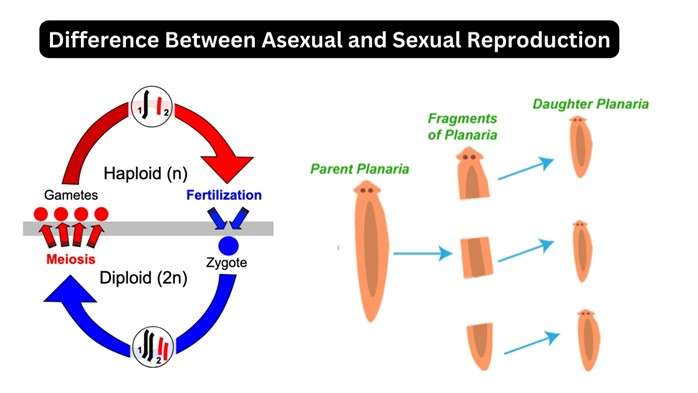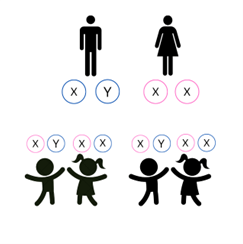At an early stage in the history of Molecular Genetics, heredity was a sensitive and controversial research topic in the scientific community. Many scientists believed that proteins were responsible for heredity. In other words, proteins had the ability to store and transmit genetic information to offspring.
However, over the course of the twentieth century, many studies were carried out that changed this view. The studies carried out thus indicated DNA as the molecule of Heredity. And it was in 1952 that this notion was officially confirmed, with the experiments of Hershey and Chase1.
This article in particular is the base article for a series of articles that will be published on our blog. In it, we’ll explain the basics of Heredity and refresh you on some basic but important concepts.
Inheritance: What Is It?
Heredity, also known as biological inheritance, can be defined as the transmission of hereditary characteristics from parents to their offspring. Obtaining genetic information at a cellular level by descendants is possible due to Reproduction2. Reproduction can occur sexually or asexually3.
Asexual and sexual reproduction correspond to two different types of reproduction, mainly with regard to the involvement of gametes in the process. A condition that has a direct influence on genetic variability between individuals.
Sexual Vs Asexual Reproduction
In the case of asexual reproduction, gametes are not involved. This means that there is no genetic variability between parent and offspring. In this type of reproduction, there is only one parent individual that can reproduce by various asexual mechanisms.
In Sexual Reproduction, gametes from both individuals involved in reproduction are involved. This is the type of reproduction that promotes genetic variability, since there is a combination of chromosomes from each gamete. In this way, each descendant organism will have unique characteristics, a unique phenotype4.

Fig. 1- Asexual Reproduction vs Sexual Reproduction (Source:
Considering the example of the human species, each individual has 46 chromosomes, but their gametes only have half of this genetic material, 23 chromosomes. When the gametes fuse, the resulting organism will carry half of the information from each parent. In other words, the offspring will carry two genetic copies that code for the same characteristic, each from a parent.
Fig. 2- Heredity- Biological Inheritance

Genes: The Basic Unit Of Inheritance
Genes, segments of DNA, are considered the basic unit of Heredity5. They carry the information from their parents and are responsible for coordinating all cellular functions through their expression throughout the organism.
Genes relating to a particular trait can be Dominant (AA or Aa) or Recessive (aa).
As explained above, each individual will receive one copy of each gene, one from the father and one from the mother. In terms of dominance, it is enough for one of the alleles to be dominant in relation to the paired allele for that characteristic to manifest itself (AA or Aa).
In the case of a recessive allele, it is only expressed if both inherited alleles are recessive (aa), i.e. there is no dominant allele in the pair. Locus, the name we use for each “space” occupied by an allele coming from one of the parents.
It is this established hierarchical pattern that allows some characteristics to be easily manifested in the offspring and others to remain hidden over generations and only show themselves when both parents transmit the recessive allele.

Fig. 3- An Example Of Inheritance: Dominant And Recessive Alleles (Source:
Dominant And Recessive Alleles
The inheritance of the color of the eye is way more complex than this. This figure is just to show you how Dominant and Recessive alleles affect phenotypes (characteristics that you can see).
We can see in the example above that the offspring only inherits the blue pattern in its eyes when it inherits recessive alleles from both parents for the trait in question. In the other cases, we can see that it was enough for the offspring to inherit a dominant allele, whether of paternal or maternal origin, to exhibit the dominant trait, in this case brown eyes.
We can also consider that there are 2 distinct types of Heredity, Specific Inheritance and Individual Inheritance.
Specific Inheritance covers all the characteristics that are specific to the species in question. For example, in the case of humans, the fact that they have 2 arms and 2 legs. This is a condition of the species.
In contrast, Individual Inheritance deals with inherited characteristics that are exclusive to each individual within the same species. Following the example of the human being, we could in this case consider a human individual who carries a mutation and consequently does not have one of his arms. It is a distinctive characteristic of that individual and not of the rest of the species. We can call this change in the regularity of the species Diversity. In other words, mutations are the basis of diversity6.
Footnotes
- The Hershey-Chase Experiments (1952), by Alfred Hershey and Martha Chase | the Embryo Project Encyclopedia.” Asu.edu, 23 June 2019 ↩︎
- Uller, T., & Helanterä, H. Heredity and Evolutionary Theory. ↩︎
- Yang, Y. Y., & Kim, J. G. (2016). The optimal balance between sexual and asexual reproduction in variable environments: a systematic review. Journal of Ecology and Environment, 40, 1-18 ↩︎
- Darwin, C. Sexual Reproduction and Genetic Variability. The Never-Ending Story of Life, 19. ↩︎
- OCHOA S. (1964). THE CHEMICAL BASIS OF HEREDITY–THE GENETIC CODE. Bulletin of the New York Academy of Medicine, 40(5), 387–411. ↩︎
- Some information here was taken from Brasil Escola ↩︎
Thank you for reading. If you’re curious and want to learn more, go to the “articles” section. Every week there are new articles published and new curiosities, stay tuned! Subscribing to our Newsletter will notify you when a new article drops.
Read Next
